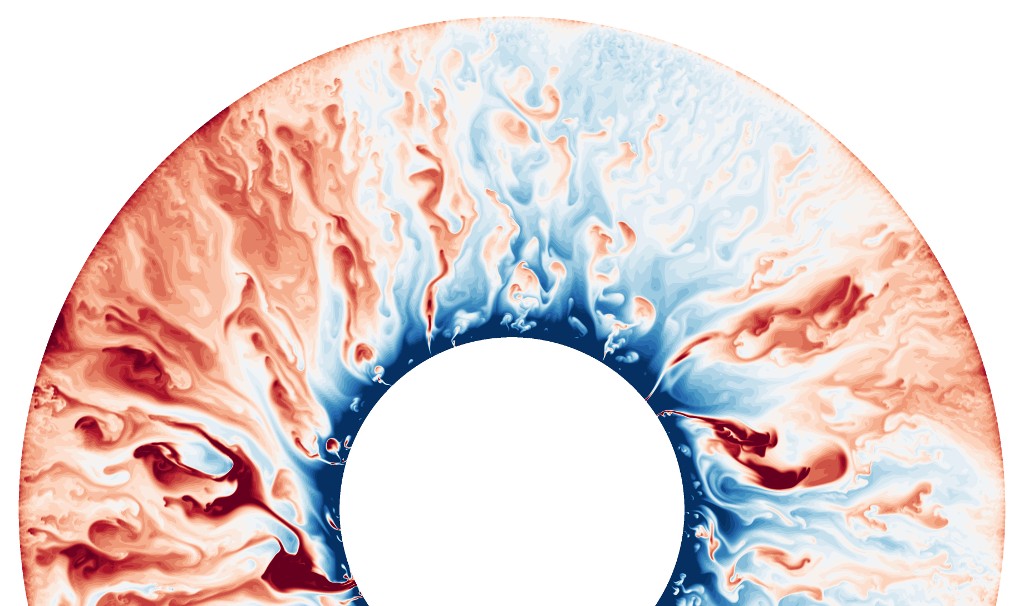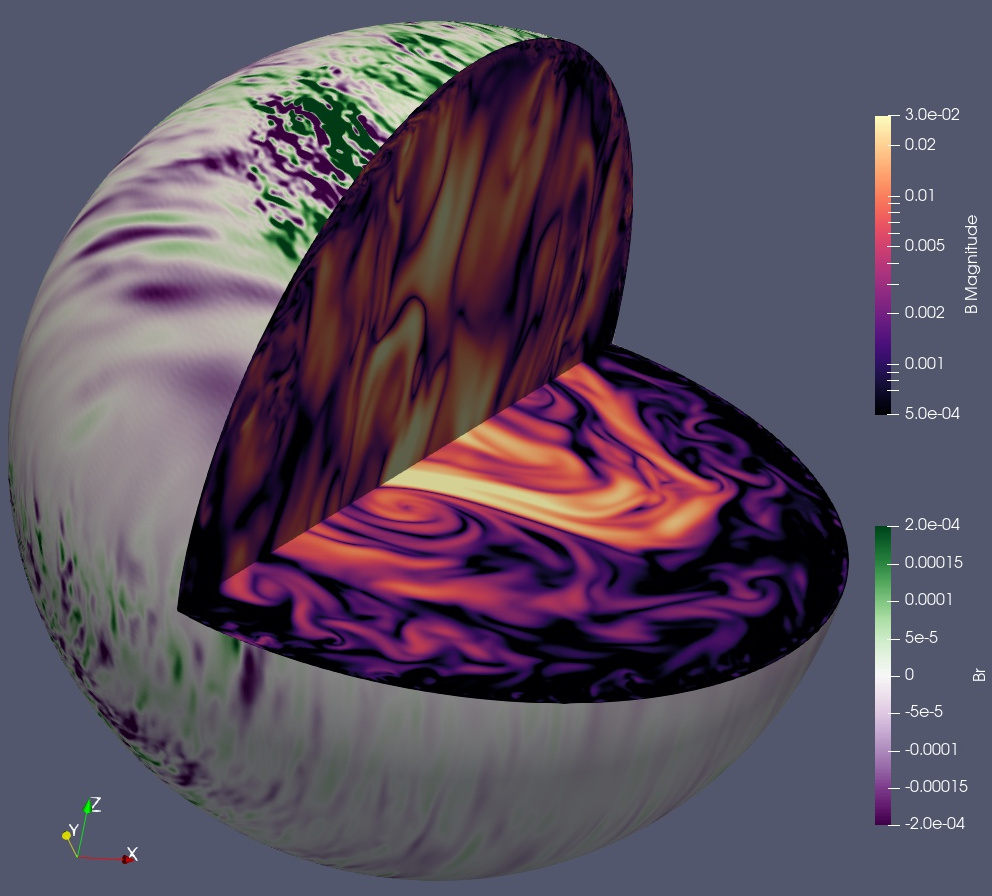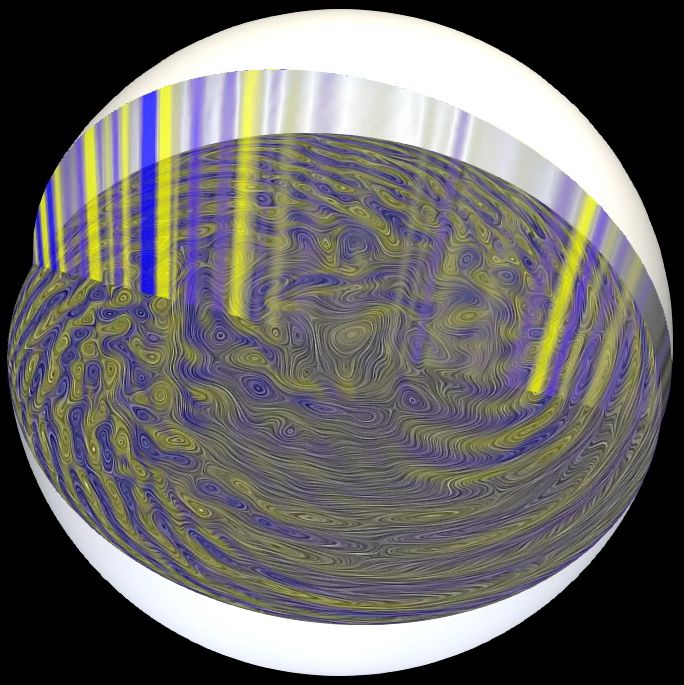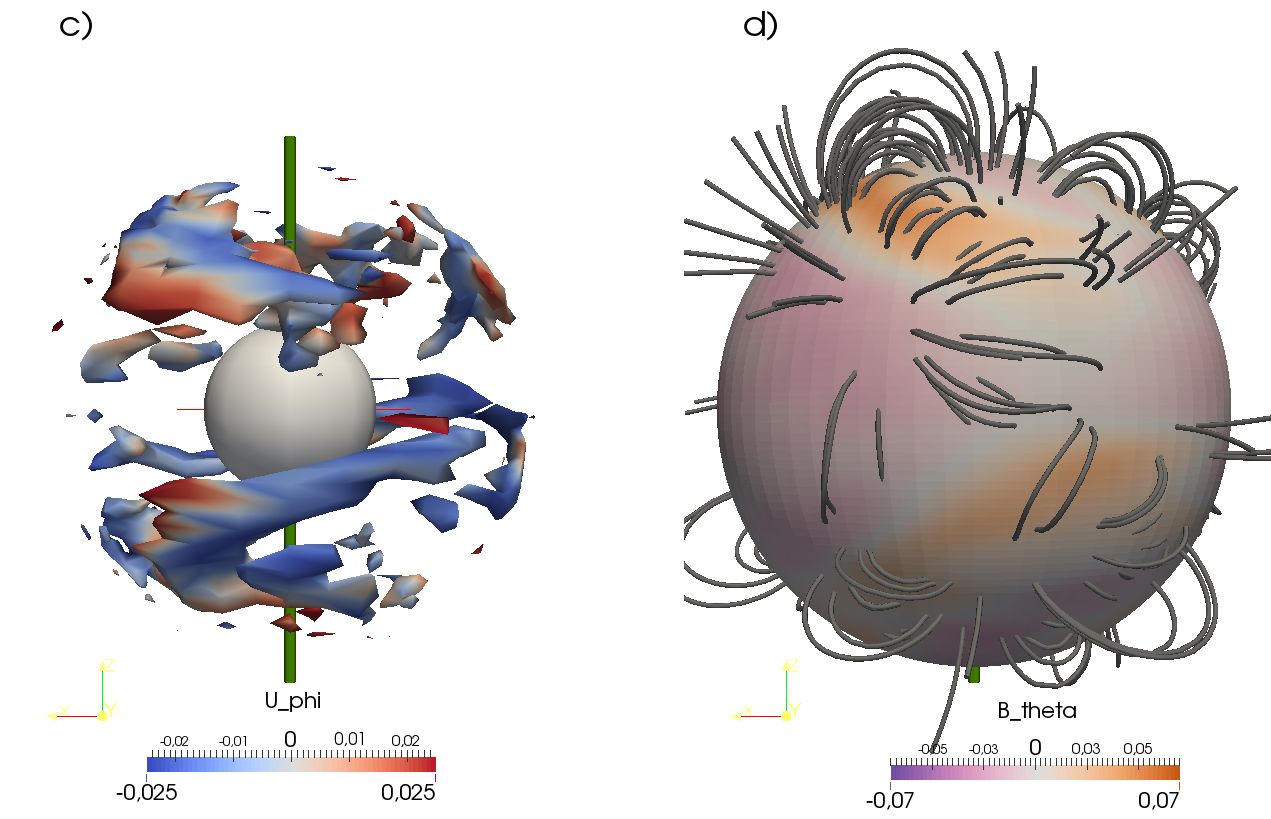High-definition turbulent geodynamo
Using the xshells code on thousands of computer cores allowed to simulate the generation of the Earth's magnetic field with unprecedented resolution.
Schaeffer et al. 2017 doi:10.1093/gji/ggx265
Powered by SHTns, the blazingly fast spherical harmonic transform library.
Xshells was designed for speed from the ground up.
Easy to use, with a nice user manual and example parameter files for geodynamo, double-diffusive convection, precession, spherical Couette, ...
Runs from your laptop to massively parallel and GPU accelerated supercomputers, using both MPI, OpenMP and CUDA/HIP.
Distributed under the CeCILL License (compatible with GNU GPL). Everybody is free to use, modify, contribute.
Tools for post-processing and visualization in python and paraview are provided.
Xshells passes the geodynamo benchmarks and the full-sphere benchmarks.

Using the xshells code on thousands of computer cores allowed to simulate the generation of the Earth's magnetic field with unprecedented resolution.
Schaeffer et al. 2017 doi:10.1093/gji/ggx265

When a sphere precesses, the fluid rotates along an axis distinct from that of the solid outer sphere.
This can lead to turbulence and generation of a magnetic field, and has applications to some planets and moons.
Cébron et al. 2019 doi:10.1093/gji/ggz037

At high thermal diffusivity (like a liquid metal) and at high rotation rate (like a planetary core), the onset of convection is subcritial,
the flow is always turbulent, while retaining the columnar structure due to the Coriolis force.
Kaplan et al. 2017 doi:10.1103/PhysRevLett.119.094501
Guervilly et al. 2019 doi:10.1038/s41586-019-1301-5

Various regimes of flow in the DTS experiment are identified and characterized using direct numerical simulations using parameters close to the actual ones.
Kaplan et al. 2018 doi:10.1103/PhysRevFluids.3.034608